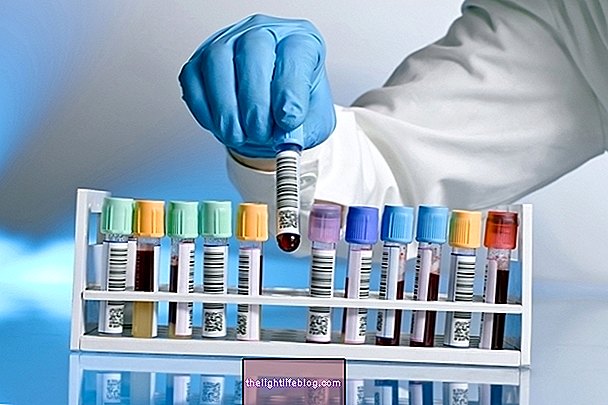Pyocytes are white blood cells eliminated through the urine, which can be detected during urinalysis. They are defense cells, also called leukocytes, which usually increase in quantity when there is infection or inflammation in the body.
Because urine can kill some of the cells simply because they are old and degenerate, it is normal to be present in an amount of up to 5 pyocytes per field or 10, 000 cells per ml of urine analyzed. However, above this amount, it is an indication that there is a urinary infection or inflammation.
Urine count in urine is also taken as urine summary, urine type I or EAS, where other urine characteristics such as density, pH, presence of compounds in abnormal amounts, such as glucose, proteins, blood, ketones, nitrite, bilirubin, crystals or cells. Learn more about what it is for and how the urine test is done.

Reference value
Normal values of leukocytes / pyocytes: up to 5 cells per field or 10, 000 cells per ml of urine.
What can indicate
The presence of increased pyocytes in the urine is also called pyuria, and may indicate a urinary tract infection. However, it is important to remember that the confirmation of this suspicion also involves the physician's evaluation, the symptoms presented and the detection of bacteria in the urine culture. Understand why uroculture is an important exam to diagnose urinary tract infection.
In addition, pyocytes may also indicate other types of inflammation in the urinary tract, such as those caused by urinary tract irritation or aggression.
How to know if it is a urinary tract infection
Urinary tract infection occurs when microorganisms, most commonly bacteria, reach and cause inflammation in the urinary tract, such as the urethra, bladder, ureters, and kidneys. The amount of bacteria detected in the urine that indicates urinary tract infection is 100, 000 bacterial colony forming units per ml of urine, observed in the uroculture.
Some of the signs and symptoms associated with urinary tract infection include pain or burning when urinating, frequent urination, blurred or unpleasant urine, blood in the urine, abdominal pain, fever, and chills. Check out how to identify the main symptoms of urinary tract infection.
In addition, the signs of urine examination that indicate the infection, in addition to increasing numbers of pyocytes, are the presence of blood clots, such as red blood cells or hemoglobin, positive nitrite or bacteria, for example.












.jpg)








